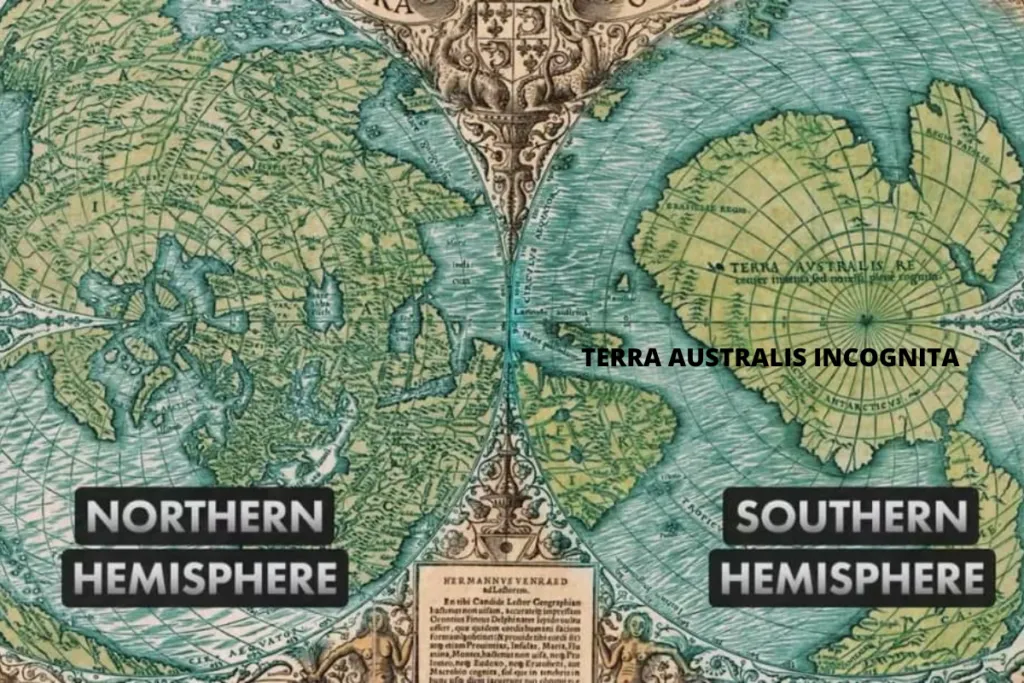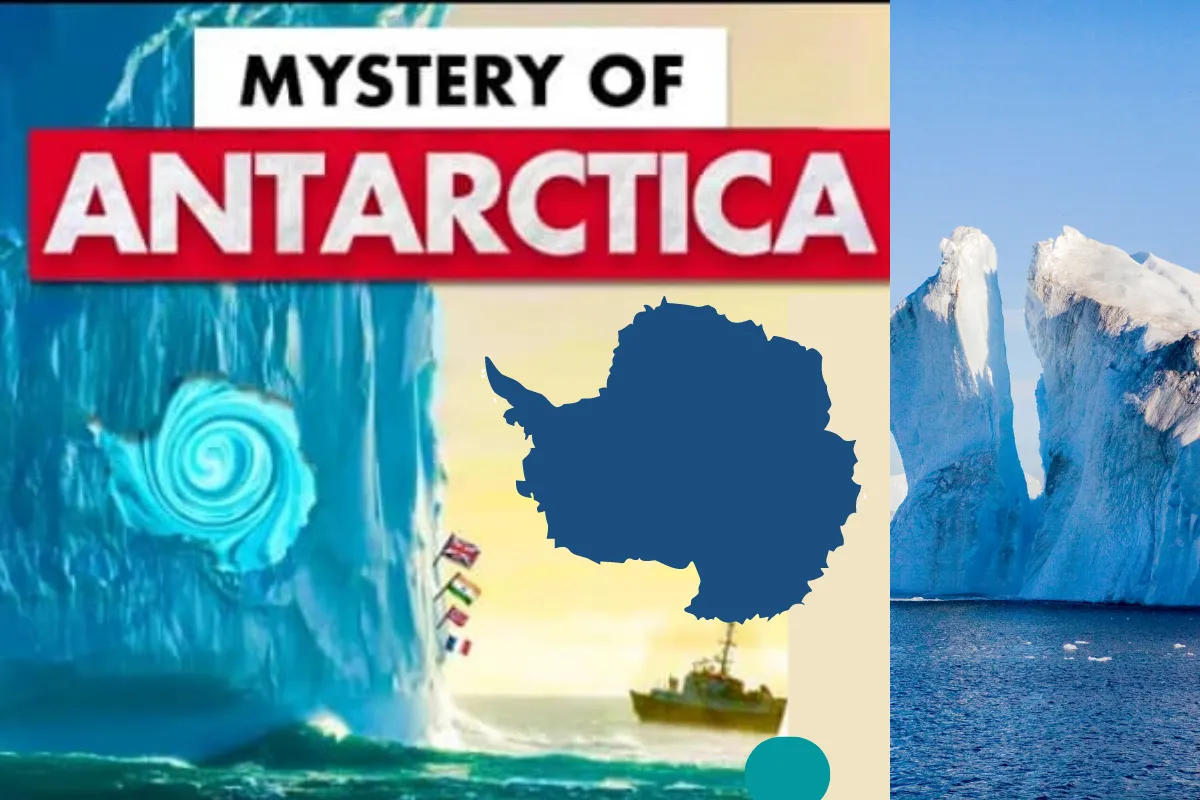Antarctica is one of the rare places where there is no human influence. It has a very unique mix of flora and fauna. But if Antarctica doesn’t have any human influence, who owns it? And if no one country owns it, then are we wasting the potential of Antarctica in the name of geopolitics? Read this.

Who Controls Antarctica?
Antarctica is the only continent which isn’t a country, doesn’t have a government, nor any indigenous tribes living there for ages. One of the most obvious reasons is that it is the coldest continent in the world. The temperature can go as low as -89° C. Additionally, it is also the windiest place on Earth. With snowstorms at a speed of 300 km/hr.
It can blind you. Antarctica is also the world’s driest continent. To the extent that you might be surprised to know that it is considered a desert. There’s only around 51mm of rain here, and even when it rains, it turns into snow before reaching the ground. So in a way, Antarctica is the only place on Earth with little to no influence from humans. But it doesn’t mean that countries all across the world haven’t tried to take over Antarctica.
France claims this part of Antarctica, Norway claims this part, Australia lays its claim on the entire part on the right side. Countries like Britain, Chile, Argentina, and New Zealand claim various parts of Antarctica. So is Antarctica truly divided among these countries? In today’s article, let’s get to know.
The Interesting Geopolitics and History of Antarctica
Let’s begin our story right at the beginning. Around 350 BC, the Greek philosopher Aristotle, was among the first people to say that the Earth was spherical. At the time, the Greeks were aware of the Arctic regions in the North. They had named it the Arctos. The word ‘Arctos’ was derived from the bear. The constellations that we can see in the sky, one of them is of the Great Bear, were inspired by that constellation and named the Arctic region, Arctos. Because they knew that the Earth is spherical, they knew that the North and South are like mirror images and would have similar features. So they named the unknown southern region Antarctos.
5 Benefits of Bananas According to Science
It meant something antithetical to the bear. The opposite of Arctos. And from here, the name Antarctic was derived. Humans stepped on Antarctica for the first time during the 1890s, but hundreds of years before that, Antarctica had started appearing on maps. When several explorers went on expeditions around the world, they knew that if they went to the South of the world, they would come upon some land. But they didn’t know what was on the land exactly. Or how big it is. This is why when the French explorers made the world map in the year 1530, they had drawn Antarctica.
Antarctica Map

The Northern Hemisphere is depicted on the left side. And the Southern hemisphere on the right side. The largest landmass in the middle of the Southern hemisphere was named It literally meant Unknown Southern Land. About 200 years later, in 1773, British Naval officer James Cook became the first person to go to the South of the Antarctic Circle. He was about 130 km farther from Antarctica, when he turned his ship around.
Even though he hadn’t seen Antarctica, he had seen icebergs with rock deposits on them. When he saw those rocks, he concluded that Terra Australis does exist. But going much closer to Antarctica was so dangerous, that he had famously said, “I Can Be Bold Enough To Say No Man Will Ever Venture Farther Than I Have Done And That The Lands Which Lie To The South Will Never Be Explored.”
He was so sure that no one could reach Antarctica, because the place was so perilous. With strong winds blowing and the ship in danger of hitting icebergs at any moment. But his words were proven wrong 50 years later. It is quite controversial as to who was the first person to step on Antarctica. Because several people claim to have been the first person. British-American Captain John Davis believed that he was the first person to do so, because his ship was lost and he reached Antarctica. The first undisputed landing was in 1895, when a Norwegian ship called the Antarctic, reached its shores. 6-7 members of the crew of this ship got into a small boat and went on to land. A Norwegian in the boat was Carsten Borchgrevink, claims that he landed before the boat mk and he was the first to step on Antarctica. But a man from New Zealand, Alexander, claims to have been on this boat, and to keep the boat steady, he was the first one to step out of the boat. These two people from the same boat got into an argument about who was the first to get off
and the first to step on Antarctica.

Alexander is sneaking out of the boat so that he could be the first man to step on Antarctica. And the rest of the people in the boat are looking at him in surprise because they too wanted to be the first. After this, the first 20 years of the 1900s are known as the Heroic years of Antarctica.
Because many expeditions were conducted during this time, There were new scientific discoveries, and we found out many new things about Antarctica. It was the first time we found out that there are plants growing on this continent. Mosses were found growing in Antarctica.
After this heroic era, came the Colonial period of Antarctica. when several countries tried to lay claim on Antarctica. between 1908 and 1942, 7 countries claimed sovereignty over this continent. Argentina, Australia, Chile, France, New Zealand, Norway and the United Kingdom.
Apart from them, there were countries the USA, the Soviet Union, Japan, Sweden, Belgium, and Germany, who were conducting explorations conducting new expeditions on Antarctica, without claiming any territory. During Hitler’s rule, in 1939, a German Antarctic Expedition was carried out, They even dropped metal Nazi Swastikas, claiming that the areas where the Swastikas were dropped, were under the control of Nazi Germany.
Surprisingly, during this period, the USA wasn’t very active. In 1924, the Secretary of State in America, announced their official position regarding the territorial claims on Antarctica. He said that if any country discovers new land in Antarctica, it doesn’t mean that the new areas would belong to the country. The land would belong to the country only when there are actual settlements in the area.
When the citizens of that country live there permanently. But this didn’t happen. Similar to how various countries try to lay claim over Antarctica, After the end of World War II, these countries started fighting each other over their claims on Antarctica’s land. By ‘fighting’ I do not mean literal warfare, what I mean is that they were expressing their claims more strongly.
These countries set up permanent research centers in Antarctica. To show that they have a permanent station in the area. And since researchers were living there permanently, they claimed the land theirs. There are several islands near Antarctica. The Heard and Macquarie Islands, on which Australia established stations in 1947-48. In 1953, France set up bases on Kerguelen and Crozet Islands. The next year, in 1954, Australia reached mainland Antarctica. And set up the Mawson station.
It was on Antarctica’s continent. One year later, Argentina set up the General Belgrano Station, this was in Antarctica on the Filchner-Ronne Ice Shelf. There’s so much ice in Antarctica, it makes it difficult to know if there is land under all that ice.
In this map,

You can see there are some Ice Shelves on the exterior of the land, and these Ice Shelves have different names. Setting up research stations had become a political strategy of the countries. At one point, the British, Chilian, and Argentinian bases were so close to each other, that it was clearly evident that they weren’t set up solely for scientific research. It was clearly evident that these stations were being set up for Intelligence activities. In fact, the territorial claims of these countries on Antarctica overlap. Look at this political map of Antarctica.
The blue dots are the present-day bases of the various countries. The existing research stations in Antarctica. The Antarctic land claimed by Norway, Australia, France, and New Zealand, can be clearly demarcated. Their territories do not overlap with each other. But if you look at the left side of the map, you’ll see the land claimed by Chile, Britain and Argentina, overlap with each other. Chile’s claims include the British and Argentine claims as well.
Synapsid Lifestyle 264 Million Years Ago Similar to Hippopotamus
In 1950, the Soviet Union government issued a memorandum to the rest of the world. Saying that if a country claimed Antarctica’s territory without the Soviet Union’s permission, Or if it made decisions regarding Antarctica with the Soviet’s participation, the Soviets would not recognise any such claims. By this time, the Cold War had broken out between America and Russia, and people were afraid that the two countries would start their geopolitics in Antarctica as well. These countries were already fighting each other in multiple areas of the world, but no one wanted them to be fighting on Antarctica too.


But thankfully, it didn’t happen. In 1958, American President Eisenhower, issued notice to the rest of the governments, calling for a treaty to ensure that Antarctica would always be a free and peaceful place. In Washington on 15th October 1959, a conference was held on it. On 1st December 1959, the Antarctic Treaty was signed. There were three major points in this Treaty.
1. Antarctica would be used for peaceful purposes only,
2. Everyone would be free to carry out scientific investigation.
3. the results of the scientific observations, would be freely exchanged and
available to all. Initially, this Treaty was signed by 12 governments, including all countries which were claiming territory on Antarctica. But the most interesting thing about this treaty is that the claims of these countries weren’t abolished. This Treaty merely suspended those claims temporarily. So legally, even now, these countries can continue to claim those territories and they are doing so indeed. This political map of Antarctica,

is still valid. Australia claims the largest share. Australia claims 42% of Antarctica. But it is also important to notice that America rejects the claims of these countries. Not only America, most of the countries around the world, reject these territorial claims. Not only this, these 7 countries claiming territory in Antarctica, do not recognise each others’ claims.
Buying Raphinha hasn’t been paid off yet, Leeds United are ready to case Barcelona
France, Australia, New Zealand, and Norway recognise each others’ claims, but the UK, Chile, and Argentina do not recognise each others’ claims because their territories overlap. Today, the countries that claim land in Antarctica, merely have a symbolic claim.
This Treaty had temporarily suspended the claims, but it also meant that on the expiry of the Treaty, these territorial claims would become important. This is why these 7 countries have held onto their claims over Antarctica. This Treaty is set to expire in 2048. Post that, whether this treaty would be renewed or not, will have to be seen.
Let’s Talk About Why Countries May Not Want to Renew
But thankfully, with the help of the Treaty, in the present there has been little to no geopolitics in Antarctica, and more scientific research. This has benefitted scientists hugely. The International Council of Scientific Unions, established a Special Committee to conduct research on the Antarctic.
Under which scientists from different countries are coordinating together. This is why every year, about 4,500 scientists go to Antarctica to work. And a strong collaboration between scientists from different countries has been seen. Friends, it is interesting to know about India’s role in this story.
Actually, in the beginning, India was completely against this Antarctic Treaty. Because India believed that this Antarctic Treaty would be used by these 10-12 countries to capture Antarctica. Even though the countries agree that the land will be used for peaceful uses only,
but it was possible that these countries may choose to carry out mining. If oil is found there, these countries would mine for oil and make profits out of it. India had appealed to the United Nations, that the United Nations should take over the control of the entire continent. But the UN didn’t do this. About 30 years later, in December 1981, India launched its first expedition to Antarctica. India did so quite secretly. So that other countries didn’t know about it.
Taylor Swift Ranked First Celebrity Biggest Carbon Emitter
It was led by renowned marine biologist Dr Syed Zahoor Qasim. India had borrowed an ice breaker ship from Norway called the Polar Circle to carry out this expedition. This expedition was successful. The New Scientist magazine published the headline “Indians Quitely Invade Antarctica” in jest It wasn’t a real invasion, it was a research expedition. But doing so was illegal because India wasn’t a part of the Antarctic Treaty.
So technically, India wasn’t allowed to go there and conduct research. At the time, India was also a part of the Non-Aligned Movement. During the Cold War between the US and the Soviet Union, Most of the countries had taken sides.
But India was Non-Aligned. We didn’t support either of the two countries. In 1983, the Non-Aligned countries pressured the United Nations so much that finally, the General Assembly of the United Nations had to concede and agreed to take up the topic of Antarctica in the next meeting. About 1 month before the meeting, India signed the Antarctic Treaty, and applied for the Consultative Party status. This was quite shocking for the rest of the countries, because till that point in time, India was against the Antarctic Treaty and then it abruptly changed its stance and signed the Antarctic Treaty.
How America became the No.1 Superpower?| Reality of USA
Today, there are 2 active stations of India in Antarctica in which constant studies and research on geology are being conducted. The second expedition of India to Antarctica, included scientist Sudipta Sengupta, in her research, she studied that the Schirmacher Hills on the coast of Antarctica, was actually a part of the fault line
joined the Indian subcontinent. It had broken apart from India from that point, after which India moved North and collided with Tibet and the Himalayas were formed. And India became a part of the continent of Asia. Later, in 1991, an Environmental Protection Treaty was signed in Antarctica, also known as the Madrid Protocol, because it was signed in Madrid, the capital of Spain. In this treaty, finally, restrictions were put on drilling and mining activities in Antarctica.
No Country Can Do Drilling and Mining in Antarctica
So that Antarctica is protected. It was very important to do so, because many countries are scavengers when it comes to oil. Under the guise of ‘exploration’ of oil, a large number of places have been destroyed. In a study from 1992, the US Geological Survey experts found, 19 billion barrels of oil under Antarctica can be recovered. Mineral explorers in Russia claim that there are 500 billion barrels of oil and gas under Antarctica. But there are 2 reasons why till now oil mining hasn’t been conducted in Antarctica. The Madrid Protocol is the first reason the Treaty keeps us protected from such instances, and the other reason is that it will be quite expensive to do so. At least for now. But in the future, due to climate change, the threat may increase further.
As this ice is melting due to climate change, it is becoming easier to access Antarctica. New technologies will be developed with time, and perhaps then it wouldn’t be an expensive affair. And it becomes economically viable to extract oil and gas from there. As I told you, this Treaty will expire in 2048. If these countries do not renew this Treaty, this can be possible after that. Several countries have taken to fishing in the oceans near Antarctica and exploiting it. Like China. China has recently expanded fishing and tourism there. Actually, after the year 2000, China is the only country which has set up research stations in Antarctica.
Oscar-Winning Emma Stone Bio and Her Personal Life
No other country has set up new stations. Apart from this, according to the data from 2018, there were several private yachts, carrying wealthy private individuals which went to mainland Antarctica, and illegally exploited nature there. Several countries talk about the ocean around Antarctica, should come under a new treaty to regulate things, so that there is no overfishing there. And to ensure that no one enters the oceans illegally, and it becomes a protected area as well. After 2003, there was a permanent physical presence of the Antarctic Treaty as well.
The headquarters is in Buenos Aires, Argentina. If you look at this in the sense of geopolitics, today, Antarctica is not a country.
It is a political territory where several countries have come together to collaborate, and divided power among them equally. But Antarctica doesn’t have any police force, no army, and no legal system. The loopholes of this Treaty can be seen being exploited even now. For tourism, tourists can go to the British station in Antarctica named the Port Lockroy, and can get their passports stamped there. Even in the territories of Chile and Argentina, tourists can get their passports stamped. It is another way through which these countries express their claims.
What do you think, friends? What should be Antarctica’s future? Should things continue as they are? Countries collaborating together, not allowed to do mining and drilling, and people can be allowed to go there for scientific research or tourism. Or should we explore Antarctica even more? Comment below to let me know. I hope you enjoyed read this Topic as always.
Thank you very much!
10 Benefits of Cinnamon for Health
This Herbal Tea Can Lower Blood Sugar To Cholesterol
These 4 Habits Help Keep Bones Strong and Healthy
Benefits of Moringa Leaves for Health
Broccoli, High Cholesterol Lowering Food

Hey there, pals! I’m Fitri Wahyuni, the awesome author behind the cool stories you find on “The Moon Day” news website! From exciting sports updates to super fun Entertainment news, I’ve got you covered! But wait, there’s more! I also write about amazing Products and share helpful Health tips to keep you feeling your best. With a sprinkle of magic and a dash of fun, I bring all these stories to life for you to enjoy. So, grab a seat, get comfy, and let’s dive into a world of adventure, excitement, and maybe even a little bit of moonlight magic! 🌙✨










Hello themoonday.com administrator, Thanks for the well written post!
To the themoonday.com admin, Your posts are always well-timed and relevant.
To the themoonday.com owner, You always provide great examples and real-world applications.
To the themoonday.com admin, Thanks for the well-researched and well-written post!
Hello themoonday.com webmaster, You always provide useful tips and best practices.
Hi themoonday.com admin, Your posts are always well-supported by facts and figures.
To the themoonday.com owner, Thanks for sharing your thoughts!
Hi themoonday.com administrator, Thanks for the informative post!
Hi themoonday.com admin, Your posts are always well researched.